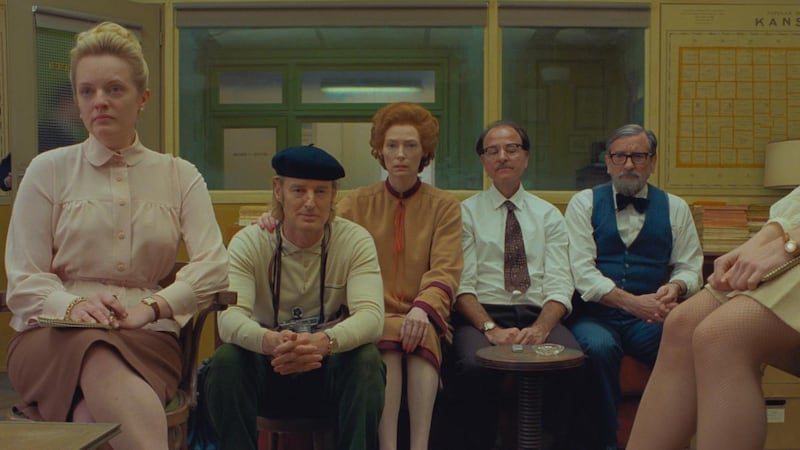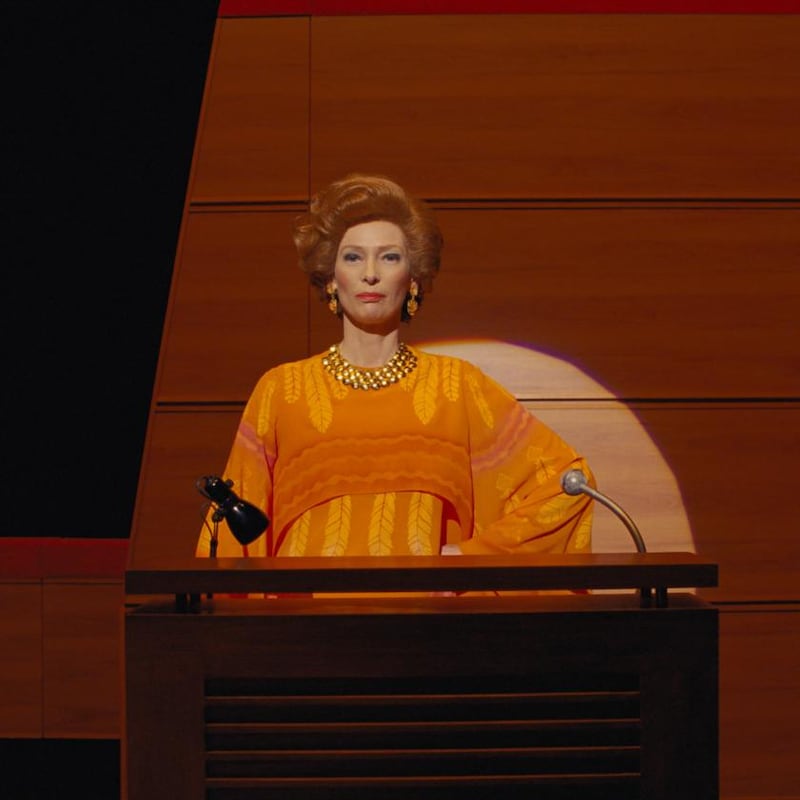As the boos and the cheers faded after the Cannes premiere of Wes Anderson's latest, critics began squabbling among themselves about a near-theological issue (this sounds rather like an incident from the film under consideration). Is it reasonable to accuse a film-maker of being too like himself? After all, you wouldn't mistake Vertigo for the work of anyone but Alfred Hitchcock, and that unsettling thriller has weathered the years pretty well.
The problem here is that, whereas all the elements of style are in place – disciplined set design, beautifully balanced colours, cautious camera moves, elegant typography – The French Dispatch lacks the momentum of The Grand Budapest Hotel or the poignancy of The Royal Tenenbaums. Paying yet another tribute to the New Yorker, Anderson gives us the cinematic correlative of a stylish American magazine's reporting on mid-20th-century France. One imagines oneself leafing pleasurably through the pages, admiring the photos, approving the layout, feeling the quality of the paper, before casting it aside and remarking: "But there is nothing to read here."

None of this is to suggest that Anderson's achievements are superficial. It requires something like genius – on his part and those of his collaborators – to get such a complex machine whirring so smoothly. Set at various points in the three decades after the second World War, the picture clearly has its eye on the nouvelle vague, but it owes at least as much to Jacques Tati as it does to François Truffaut. An early shot offers a variation on the famous exterior of an elegantly scruffy building in Tati's Mon Oncle. Alexandre Desplat's jaunty score nods towards that director's magnificent foolishness. It is undoubtedly a labour of love.
What a shame it fails to grip. The usual problem with anthology films is that no story is given a chance to properly breathe. Here the reverse is the case. Featuring a fulgent array of stars, flitting from framing sequences in the US to core narratives in France, the picture promises a kaleidoscope of narrative. Instead it focuses on just three yarns, none of which quite justifies its relatively modest length.
The first features Benicio del Toro as a jailed artist, who takes prison guard Léa Seydoux as his muse. The second stars flailing Timothée Chalamet as a student revolutionary who, during les événements of 1968, becomes entangled with journalist Frances McDormand. The final episode casts Jeffrey Wright, apparently inclining towards James Baldwin, as a food writer caught up in an extravagant kidnapping that plays out like a less zippy episode from Tintin.
Must the images work quite so hard at overworking romanticised clichés of the French experience? Pepé Le Pew cartoons offer a more nuanced version of Gallic life than we get here
You could hardly throw a cast like that at something so lovely and not generate discrete pleasures. Ratios shift. We move from colour to monochrome. Tilda Swinton provides a hilarious vocal performance – partly Julia Child, partly Ethel Barrymore – as a writer giving a presentation on the opening narrative. The animated incarnations of the final part are a delight to behold. Yes, that is the barely registering voice of Jarvis Cocker as a contemporaneous French pop star. (If you are wondering about our own Saoirse Ronan, she, like others such as Elisabeth Moss and Willem Dafoe, are there and gone in a flicker.)

Unfortunately, the lack of urgency in the plotting allows us too much time to pull apart the occasional awkwardness and naivety. Has Anderson really named his city Ennui-sur-Blasé? The man lives in France. He could surely have devised a less clunky play on the native tongue than that. Must the images work quite so hard at overworking romanticised clichés of the French experience? Pepé Le Pew cartoons offer a more nuanced version of Gallic life than we get here.
The French Dispatch is a lovely, lovely thing. But it is as impossible to grasp as a handful of water. Or claret. Or Pernod. You get the drift.
The French Dispatch opens on October 22nd













